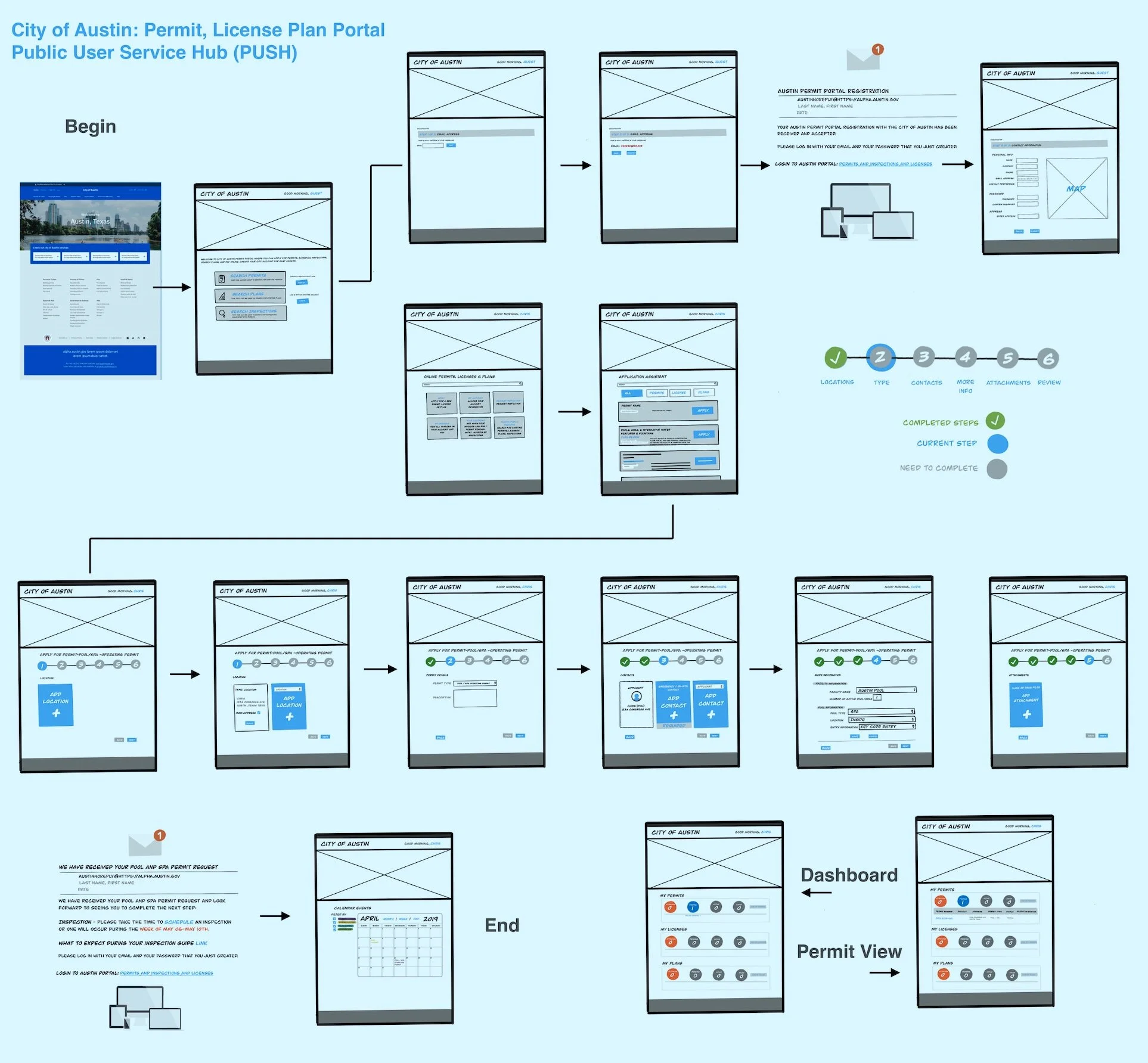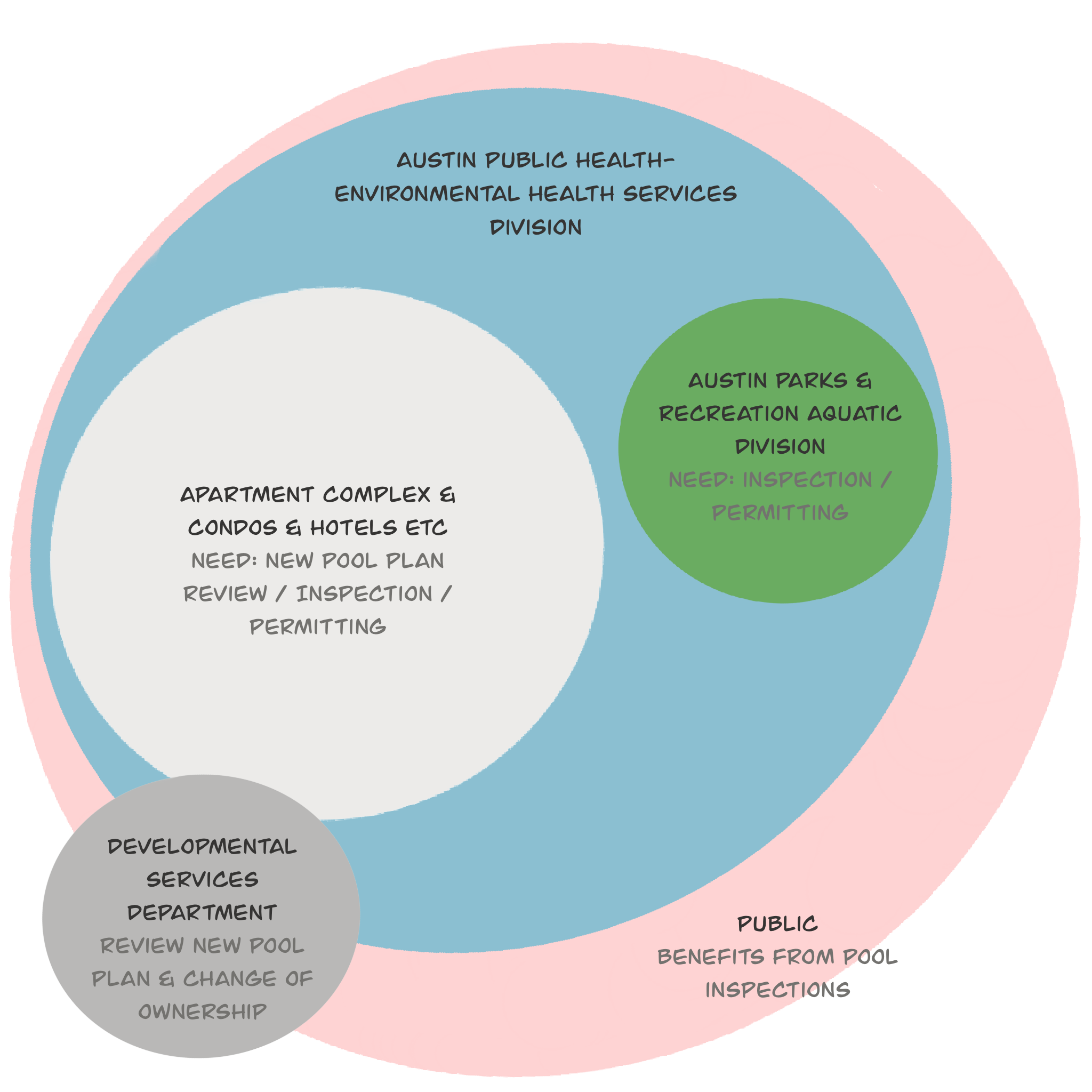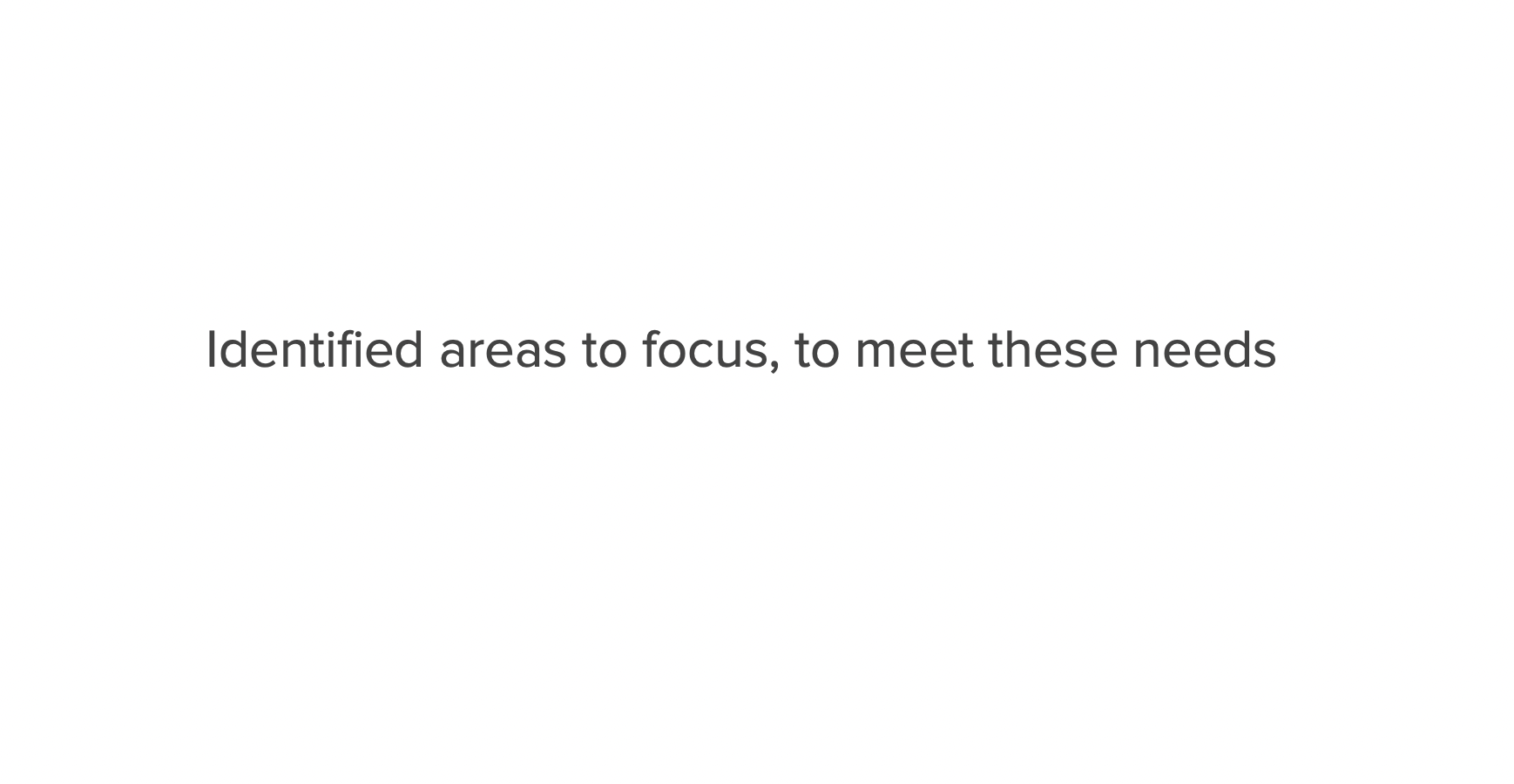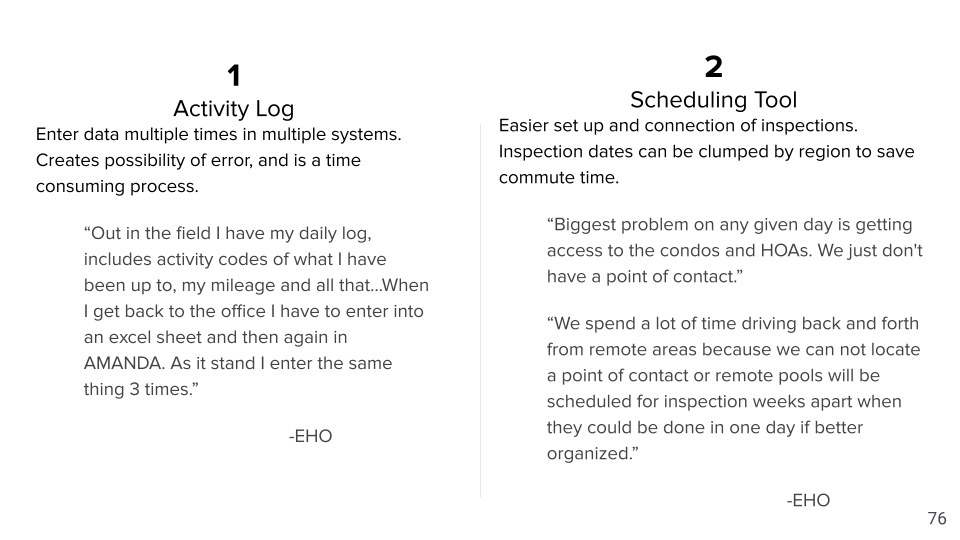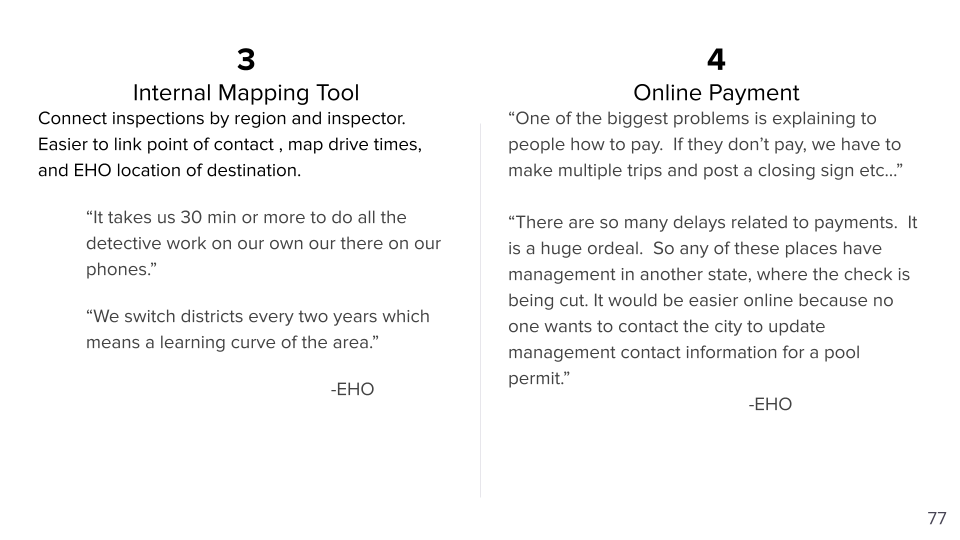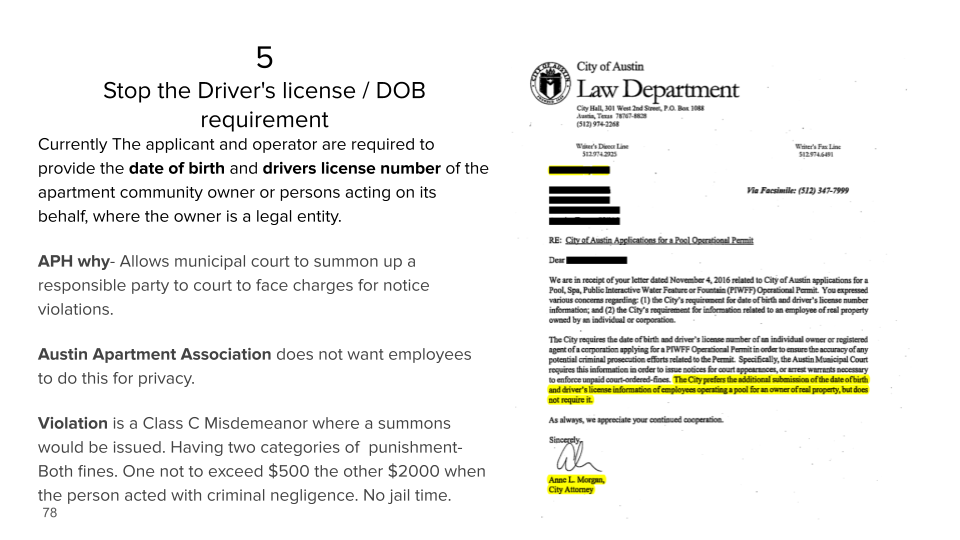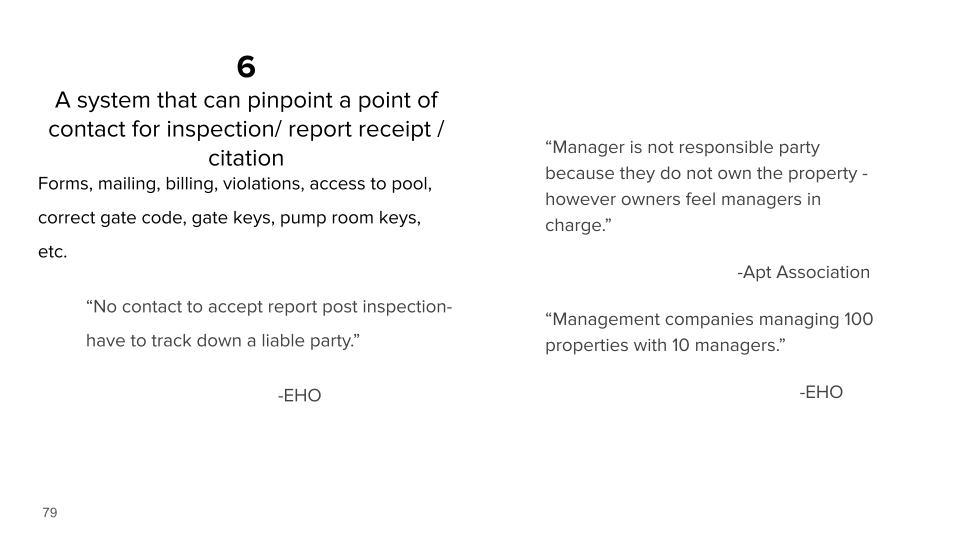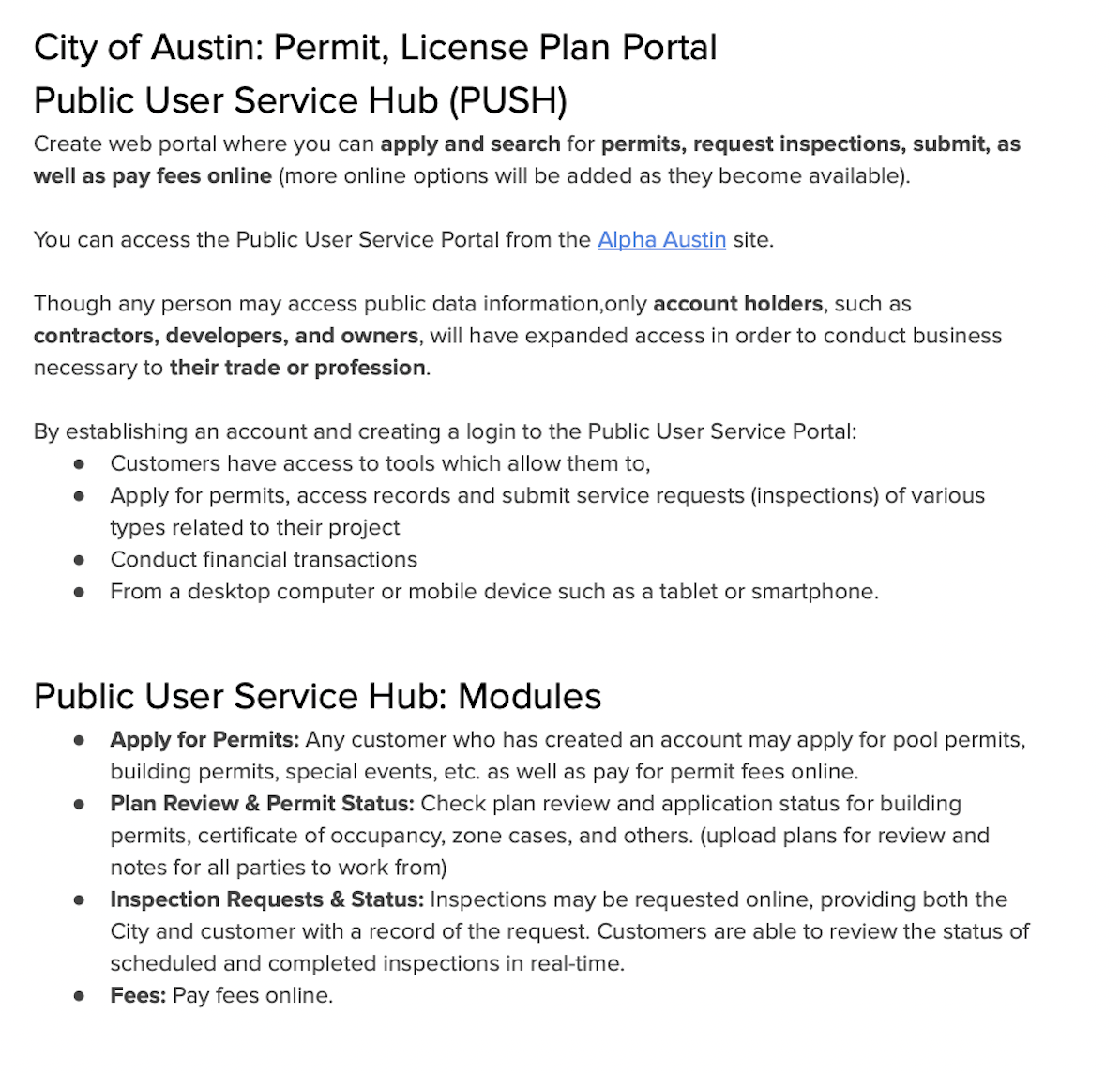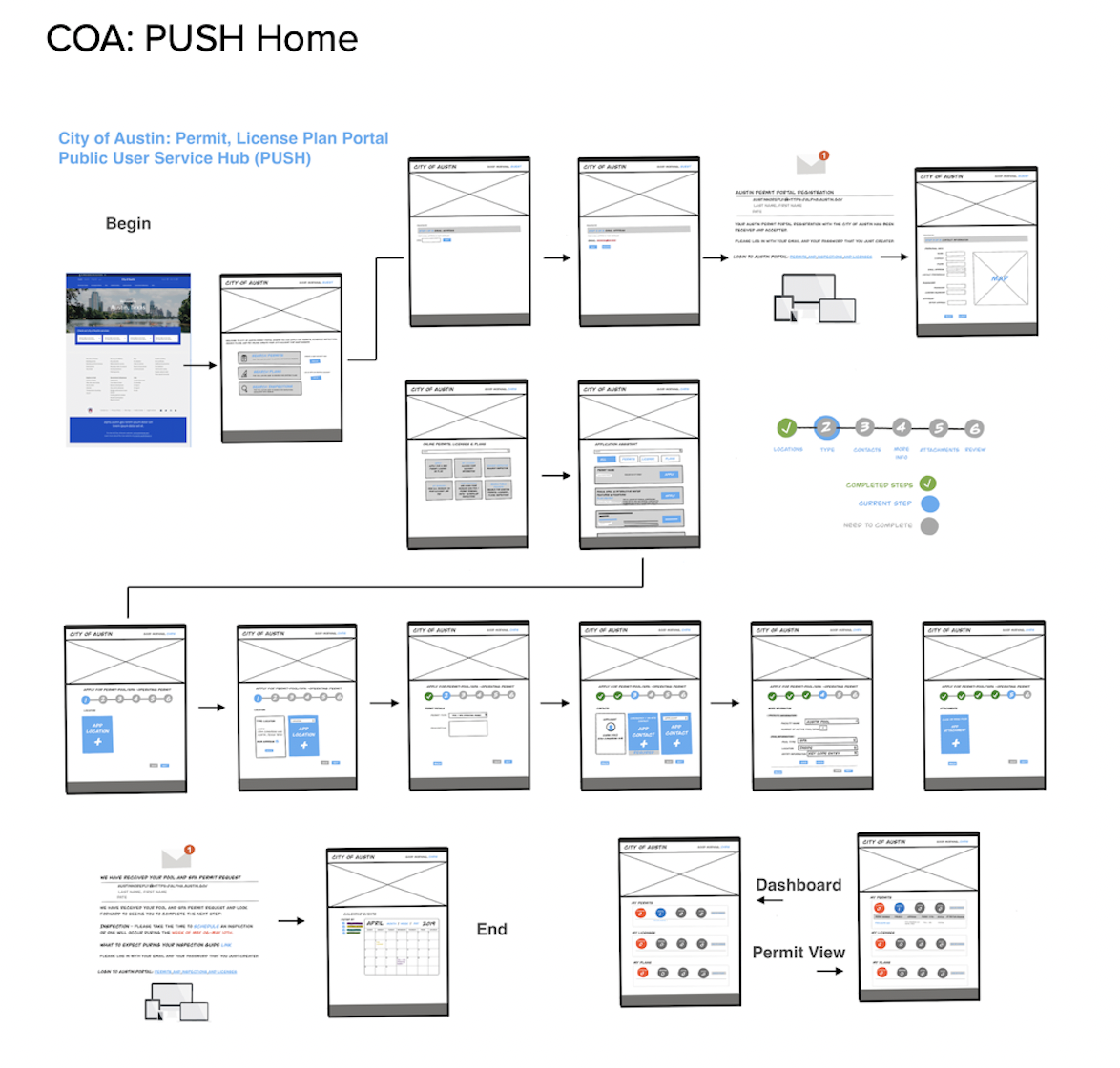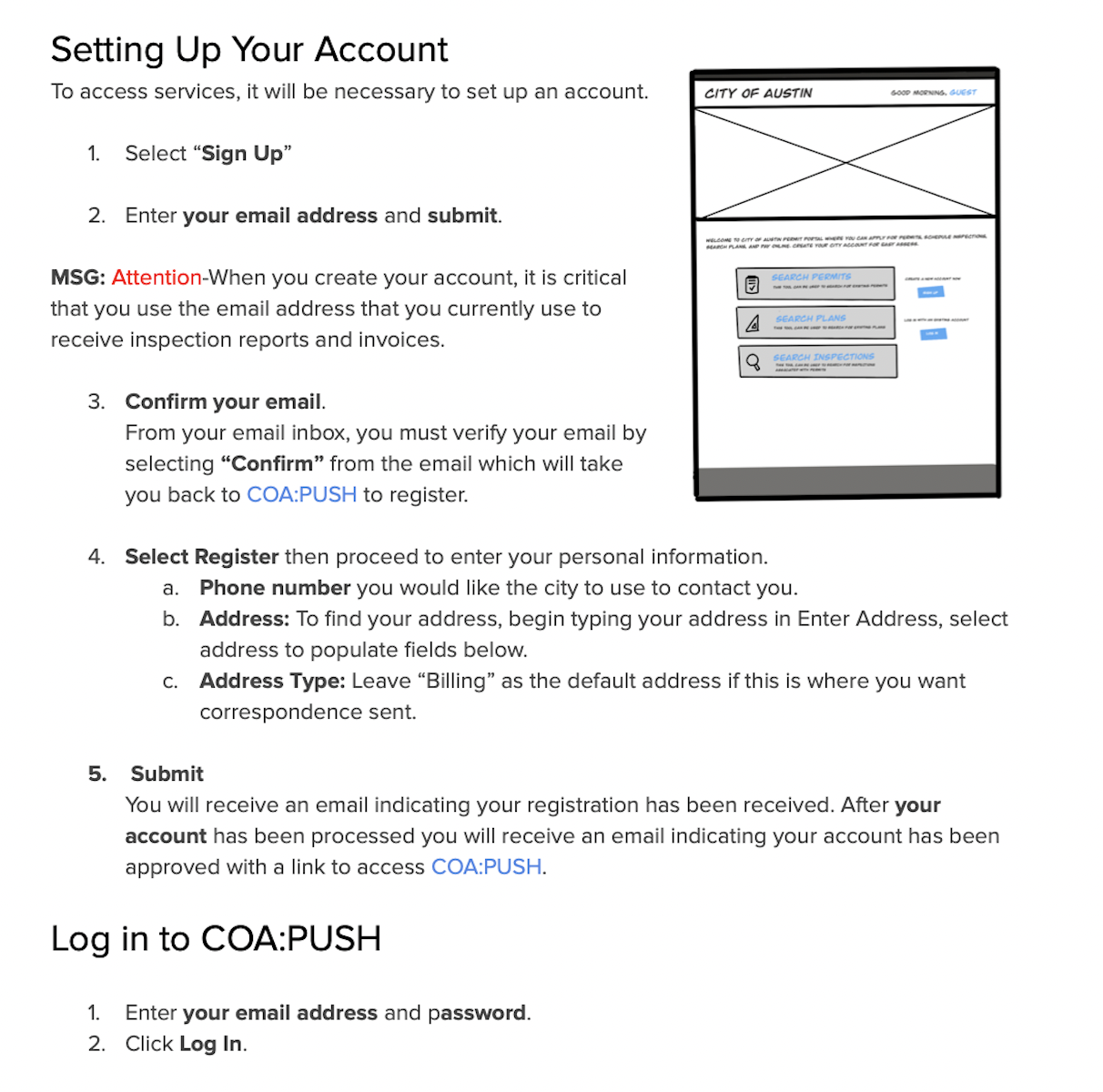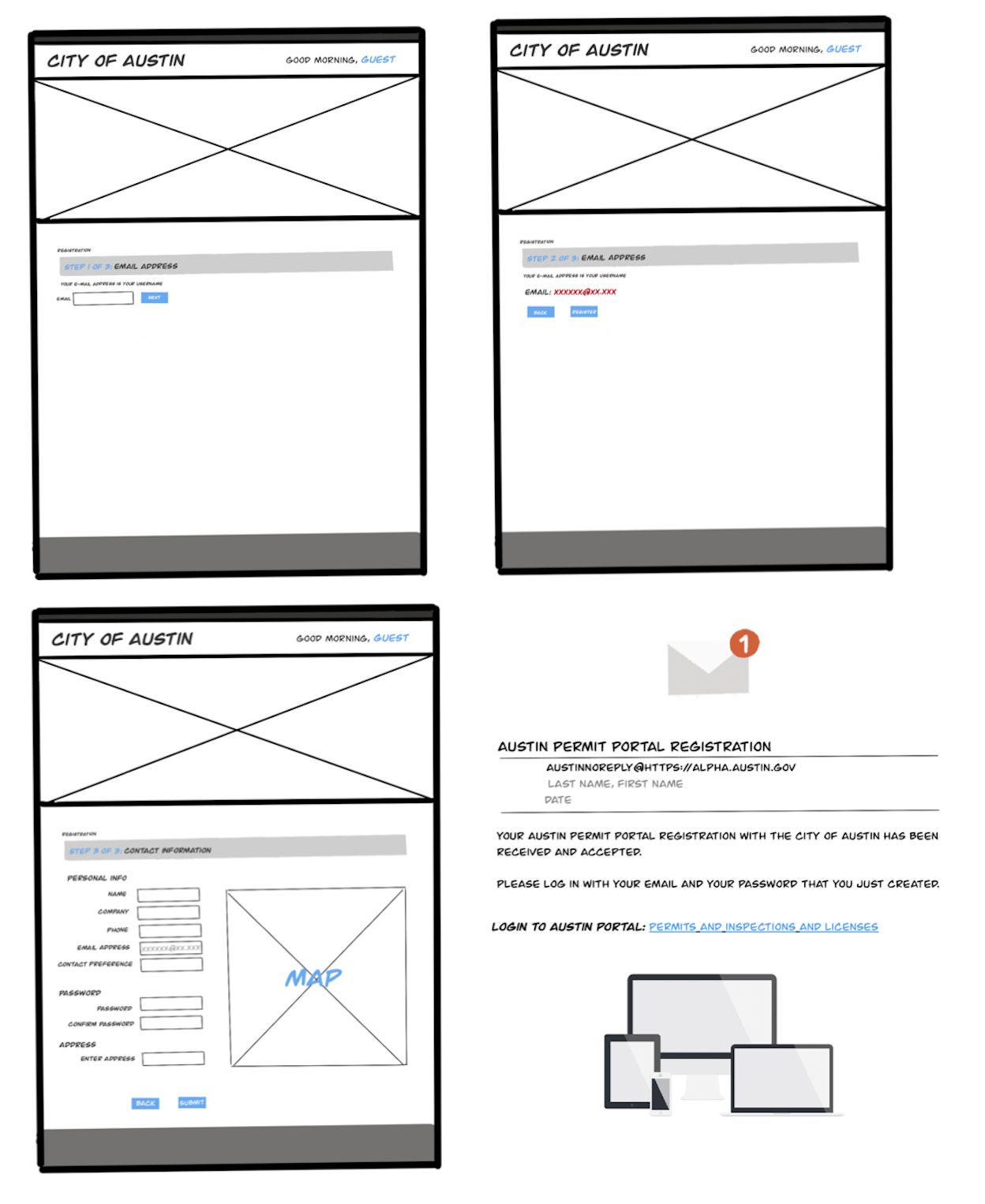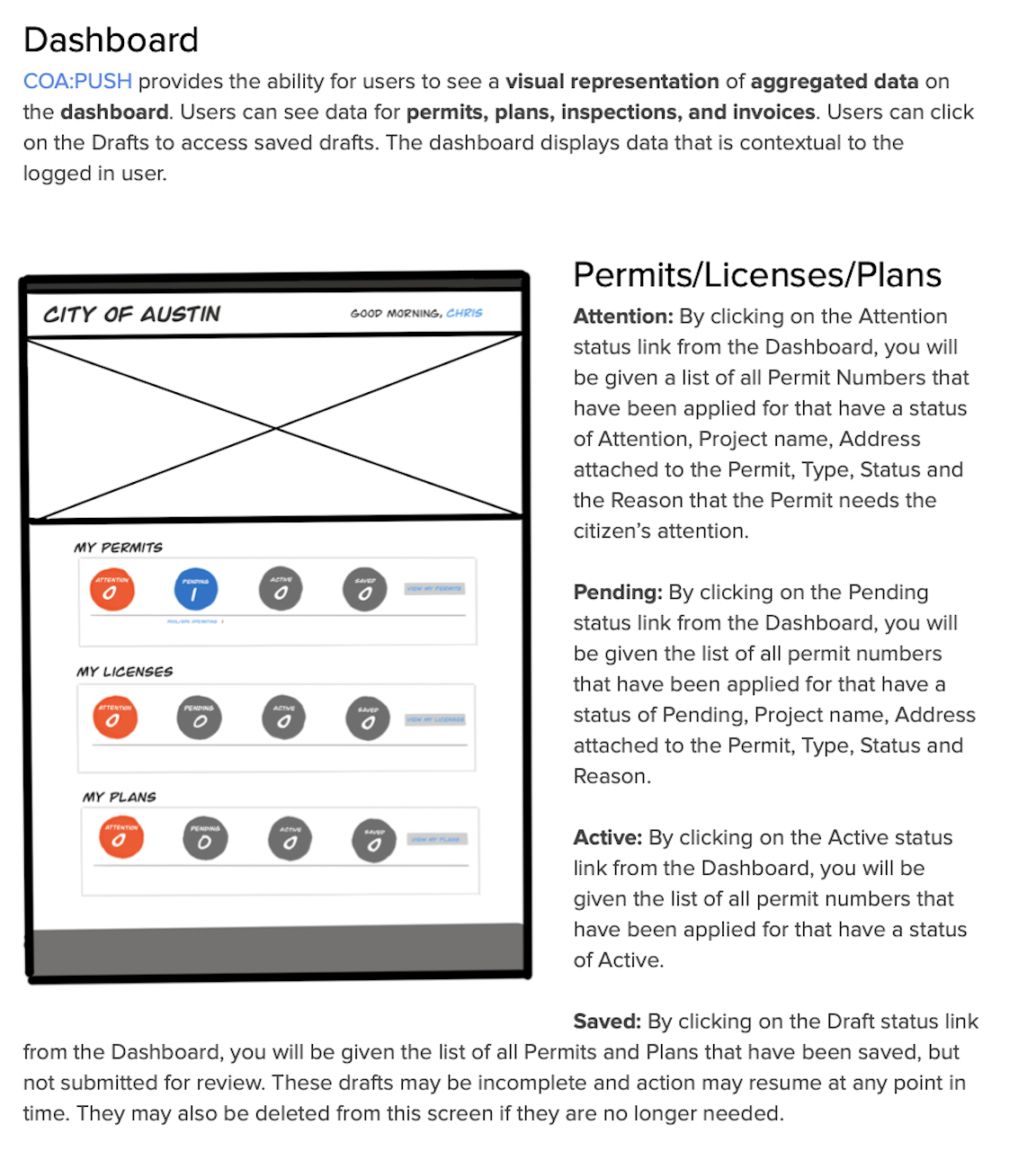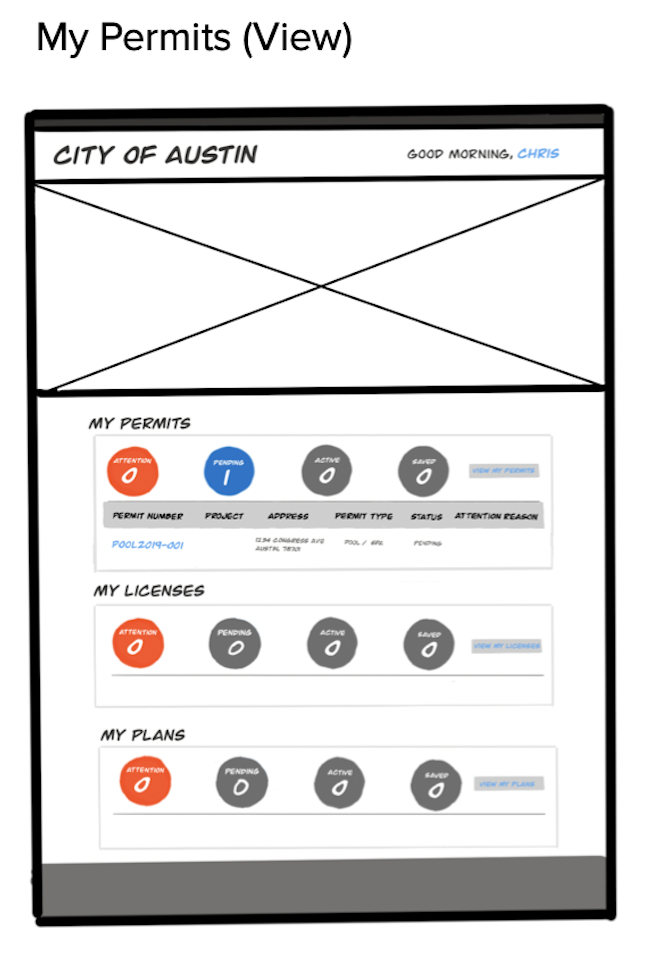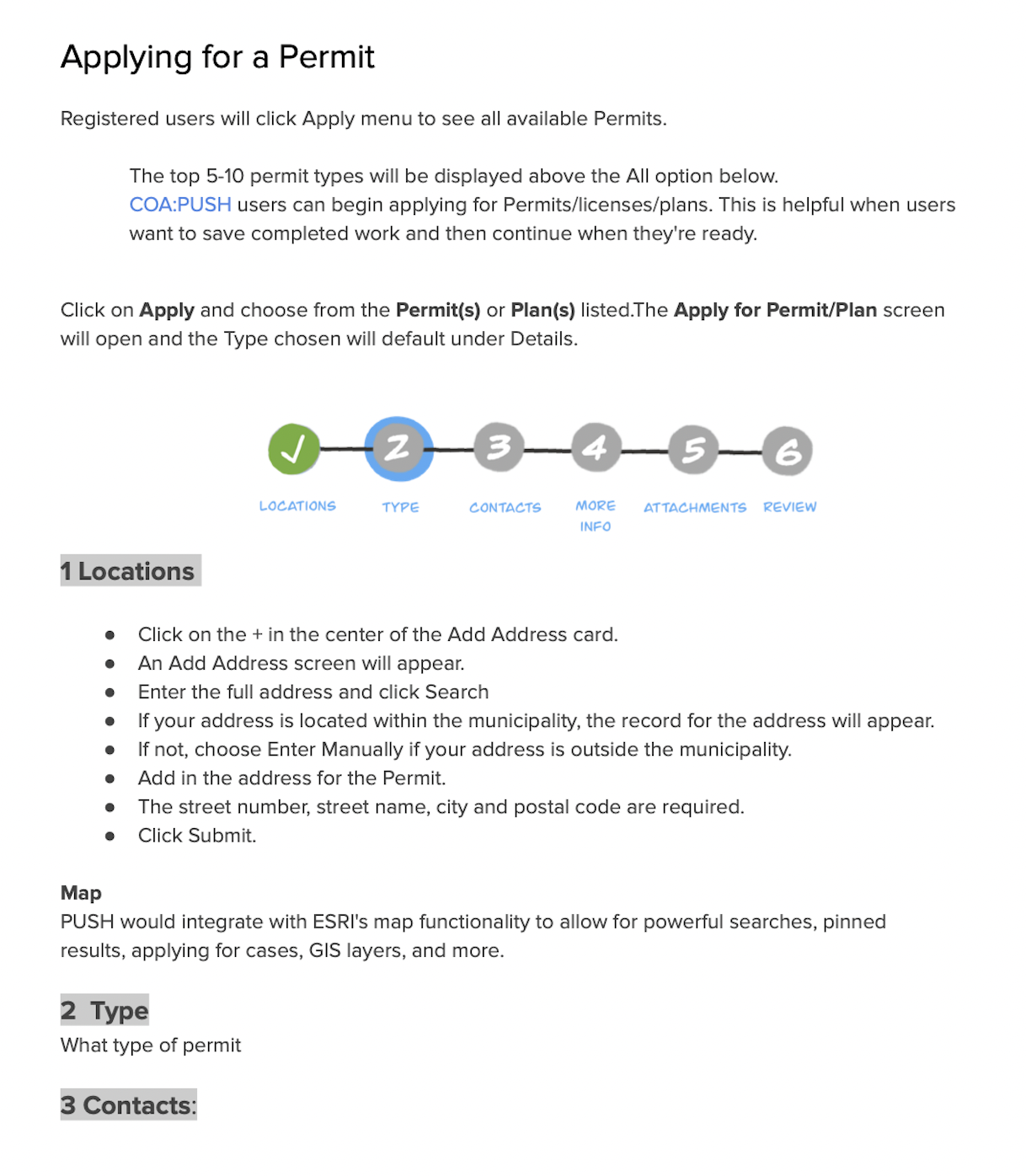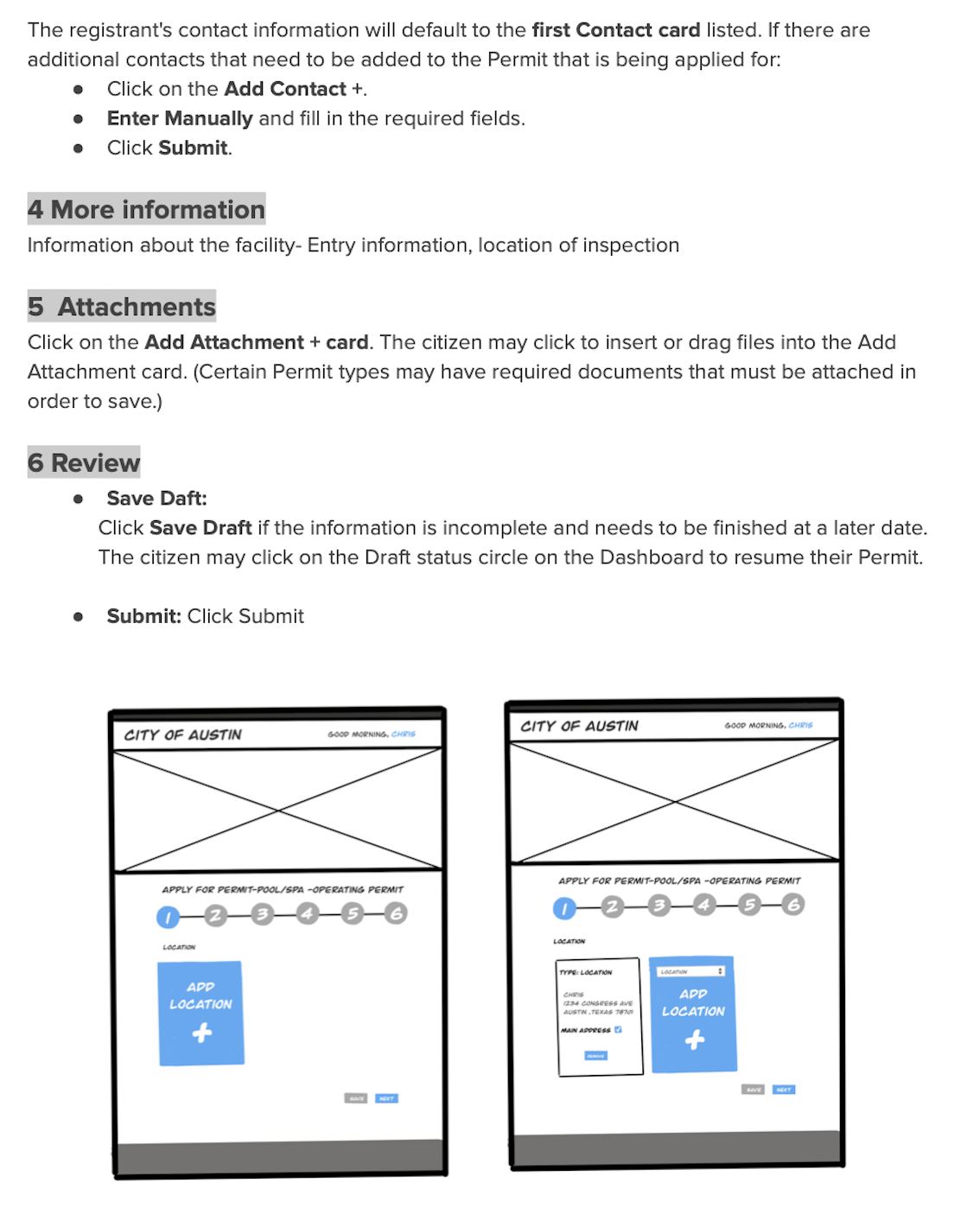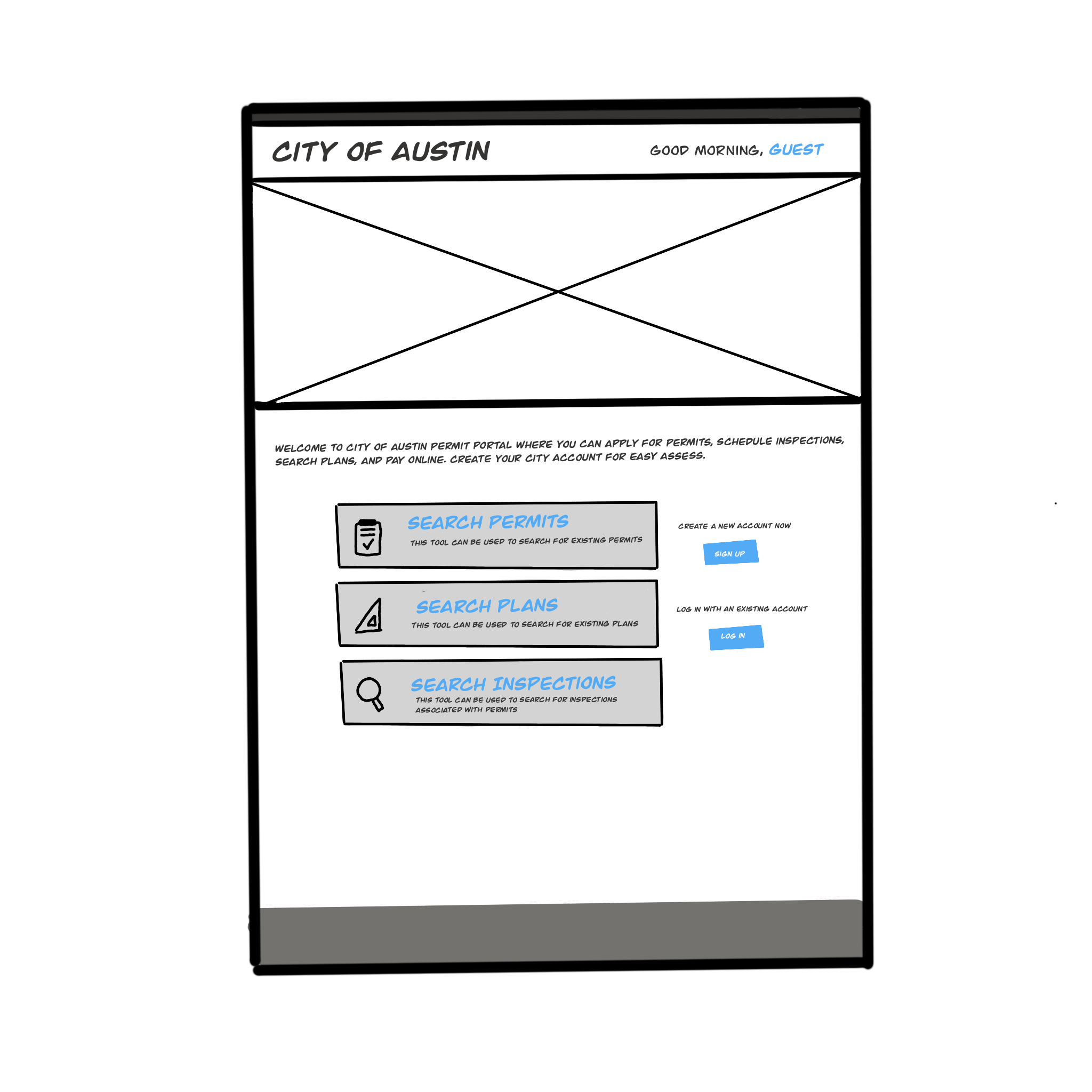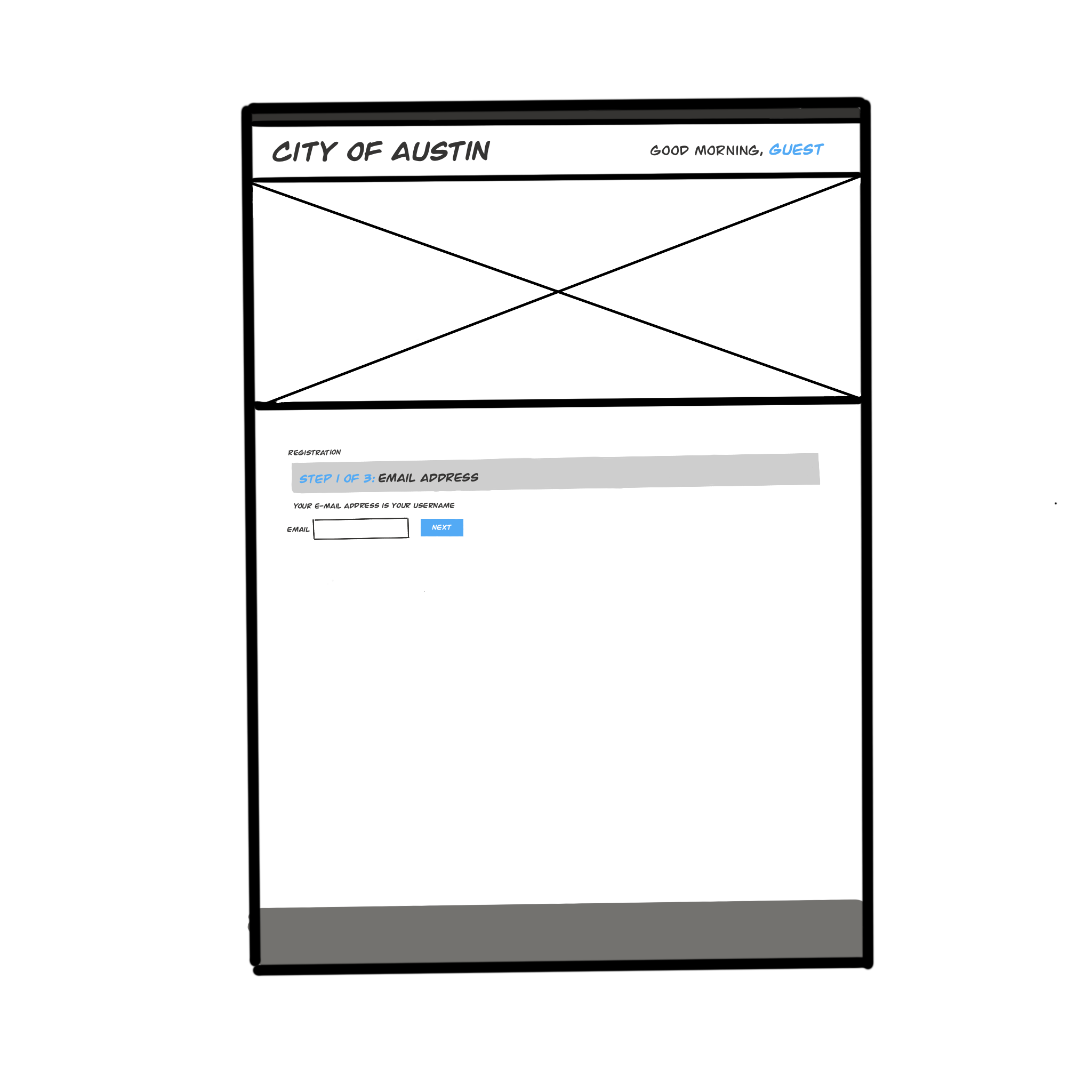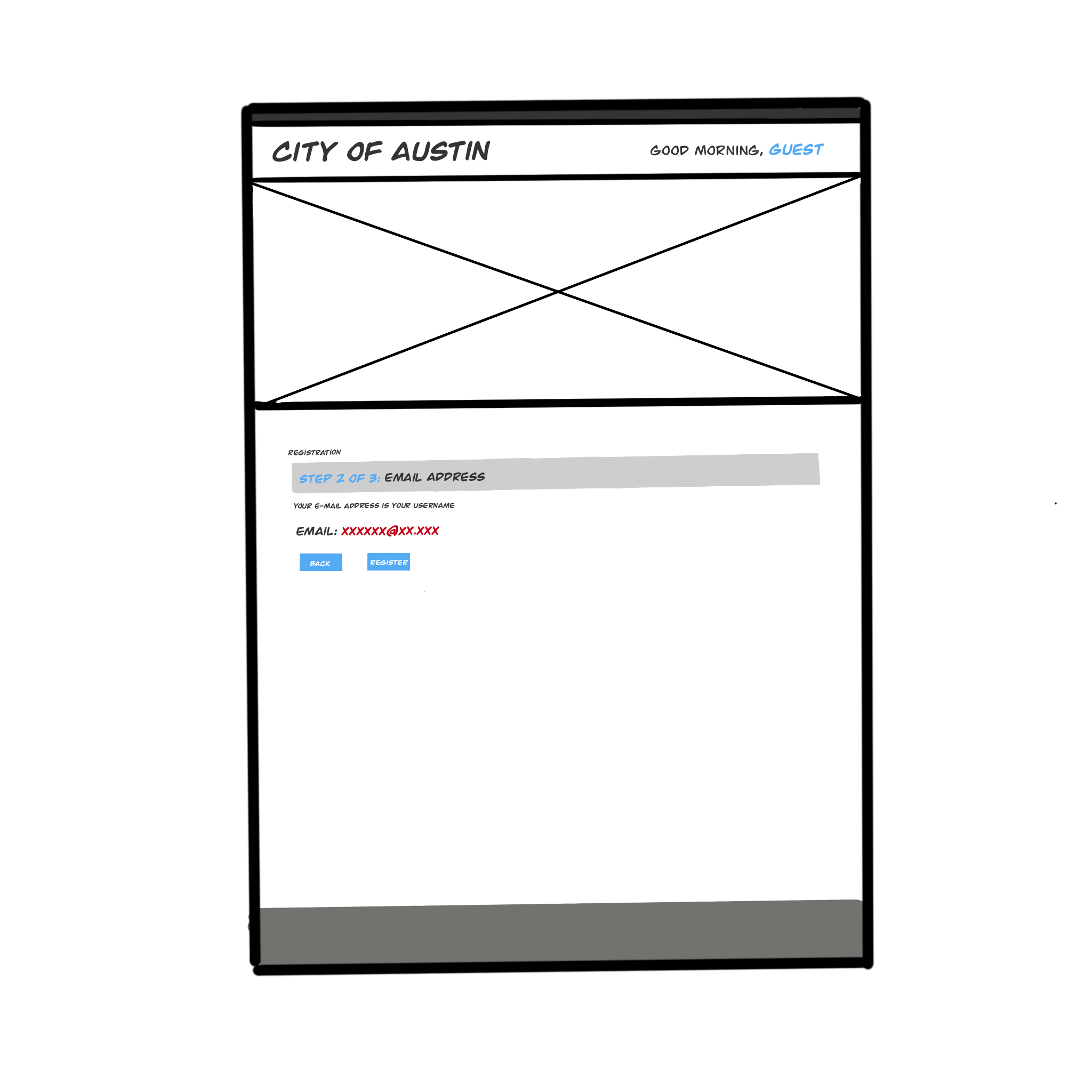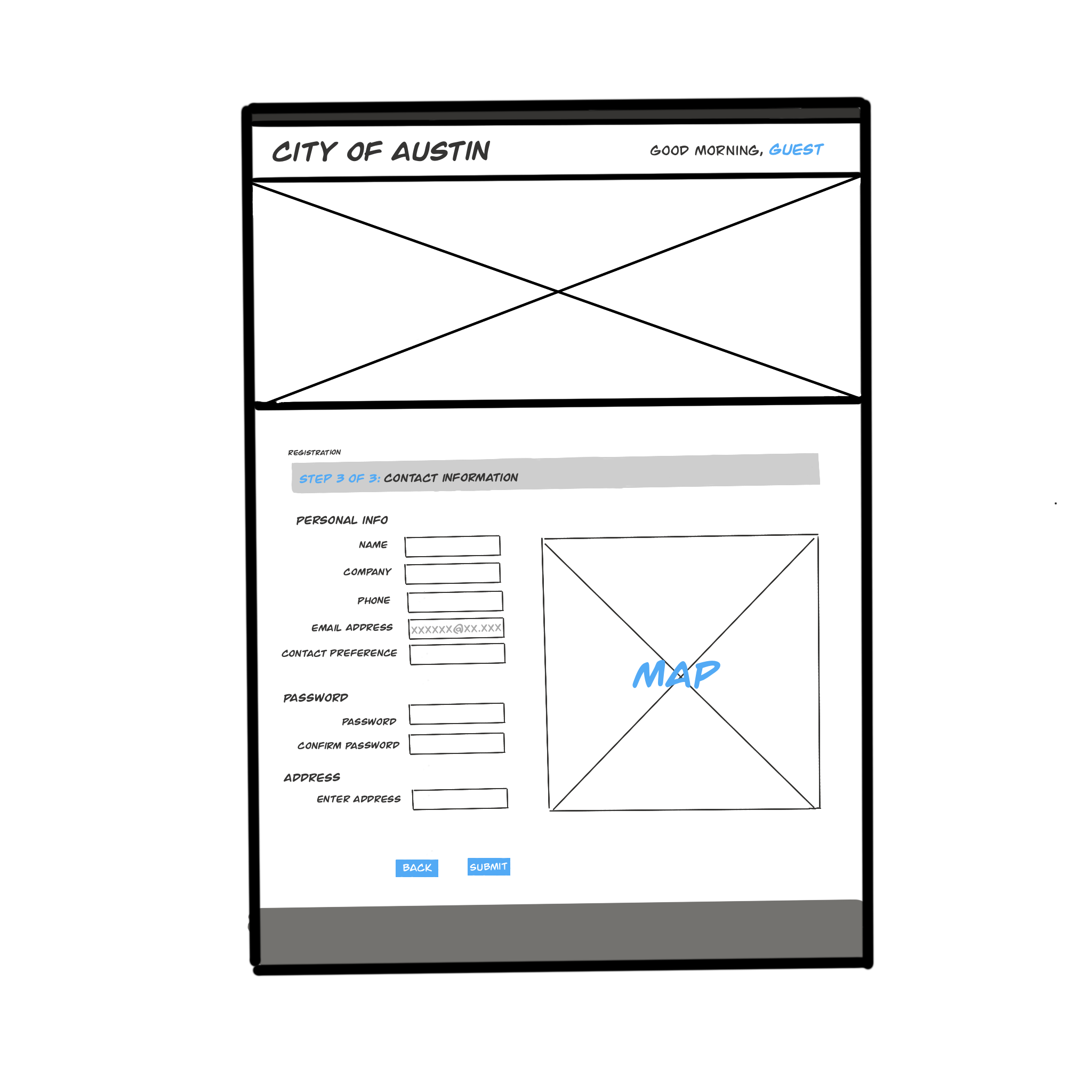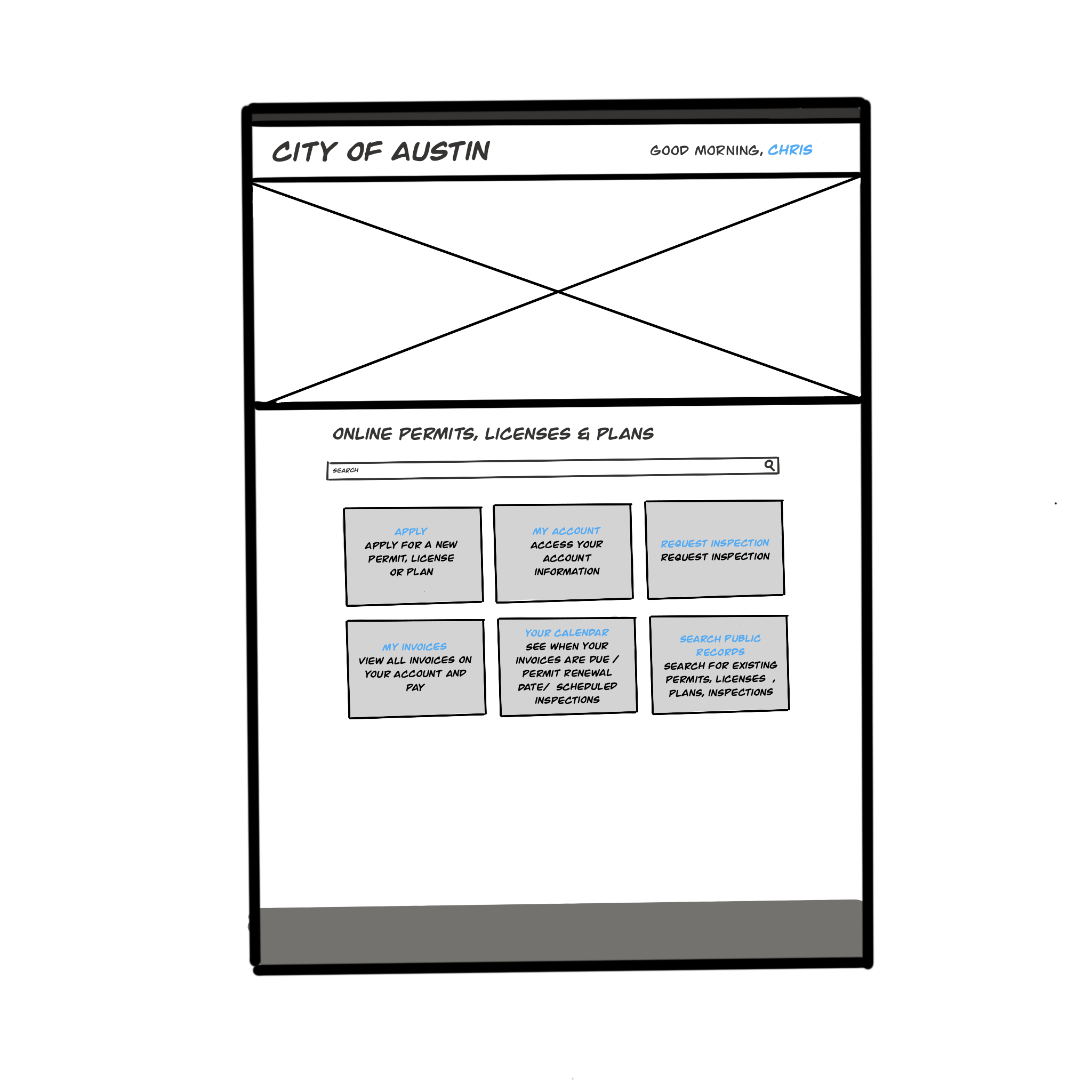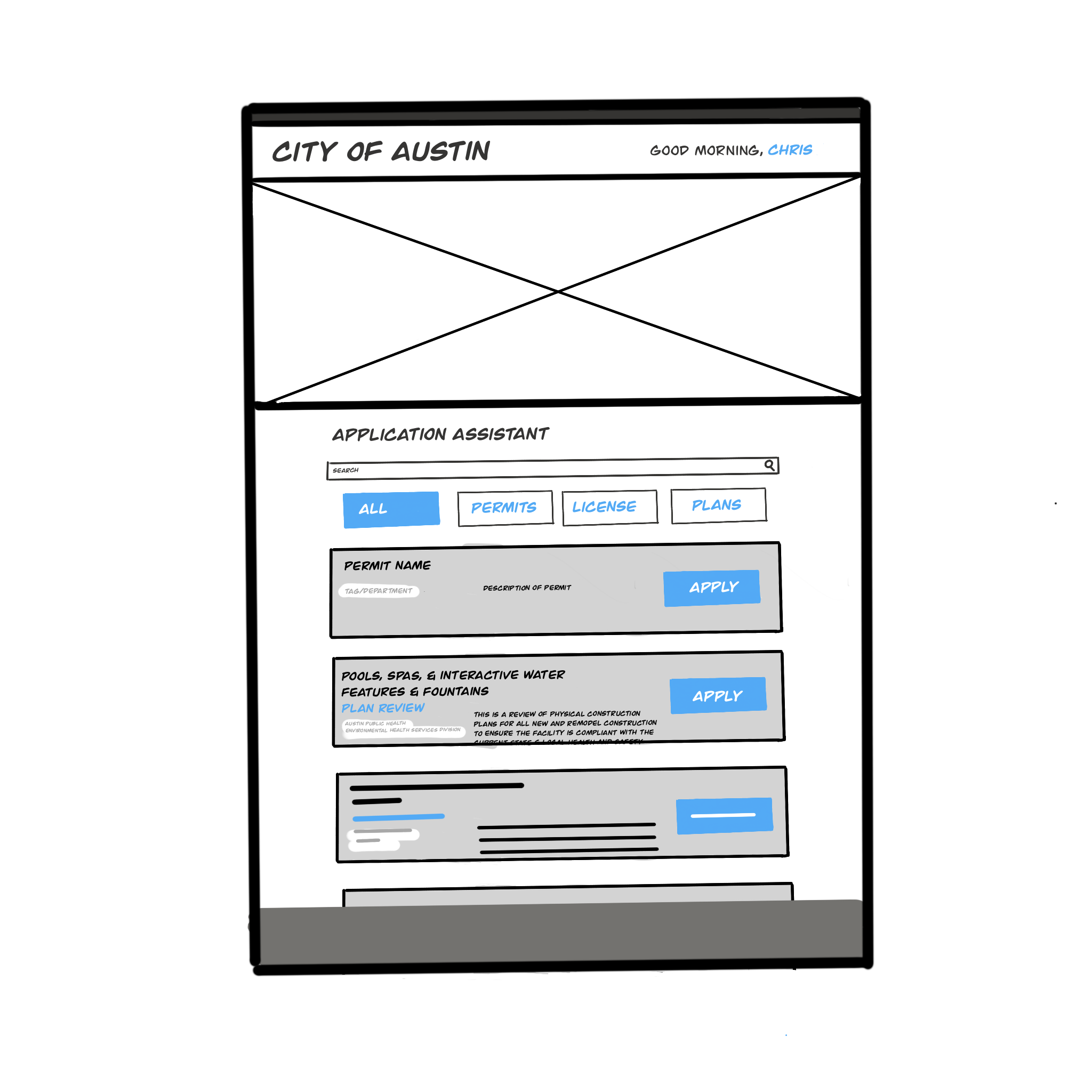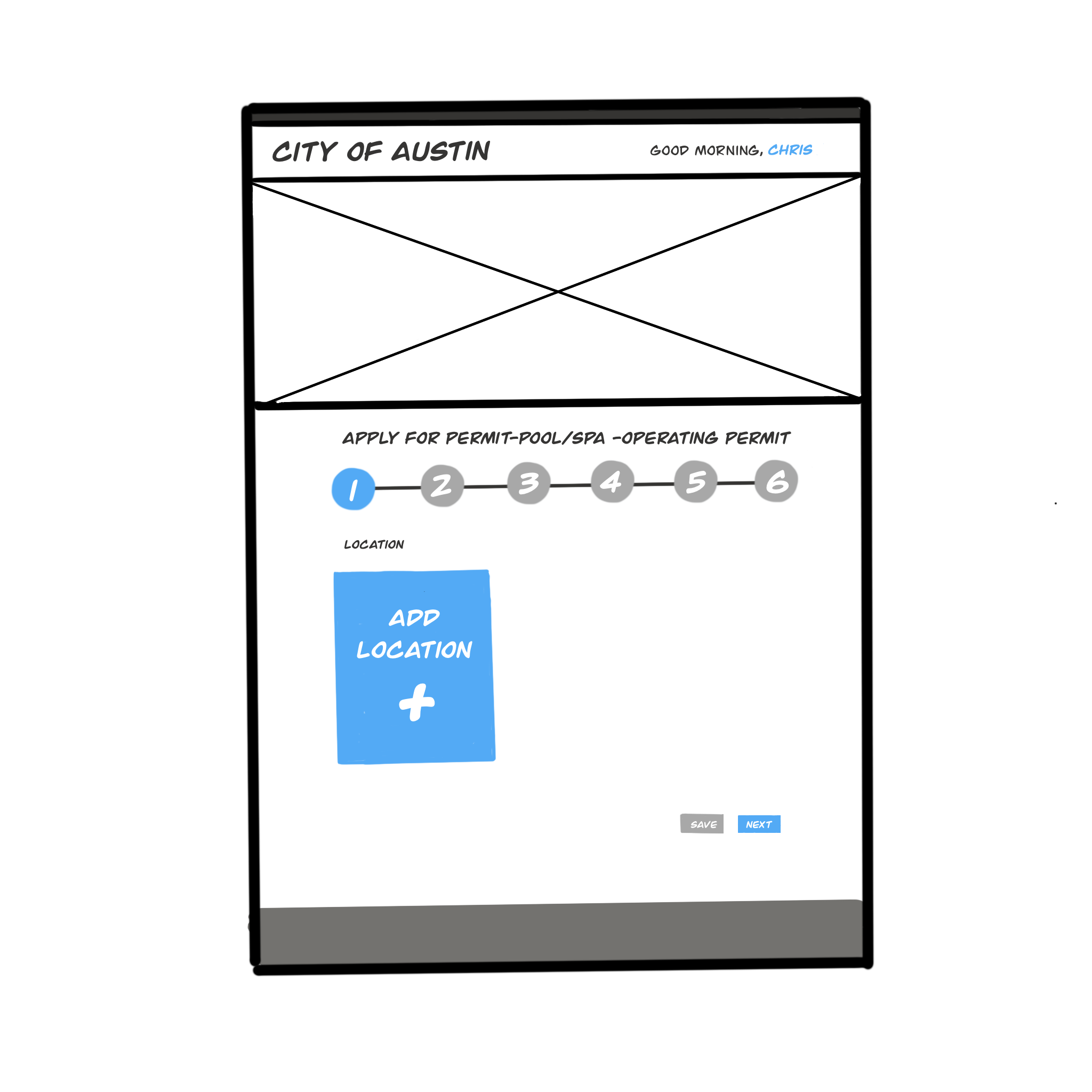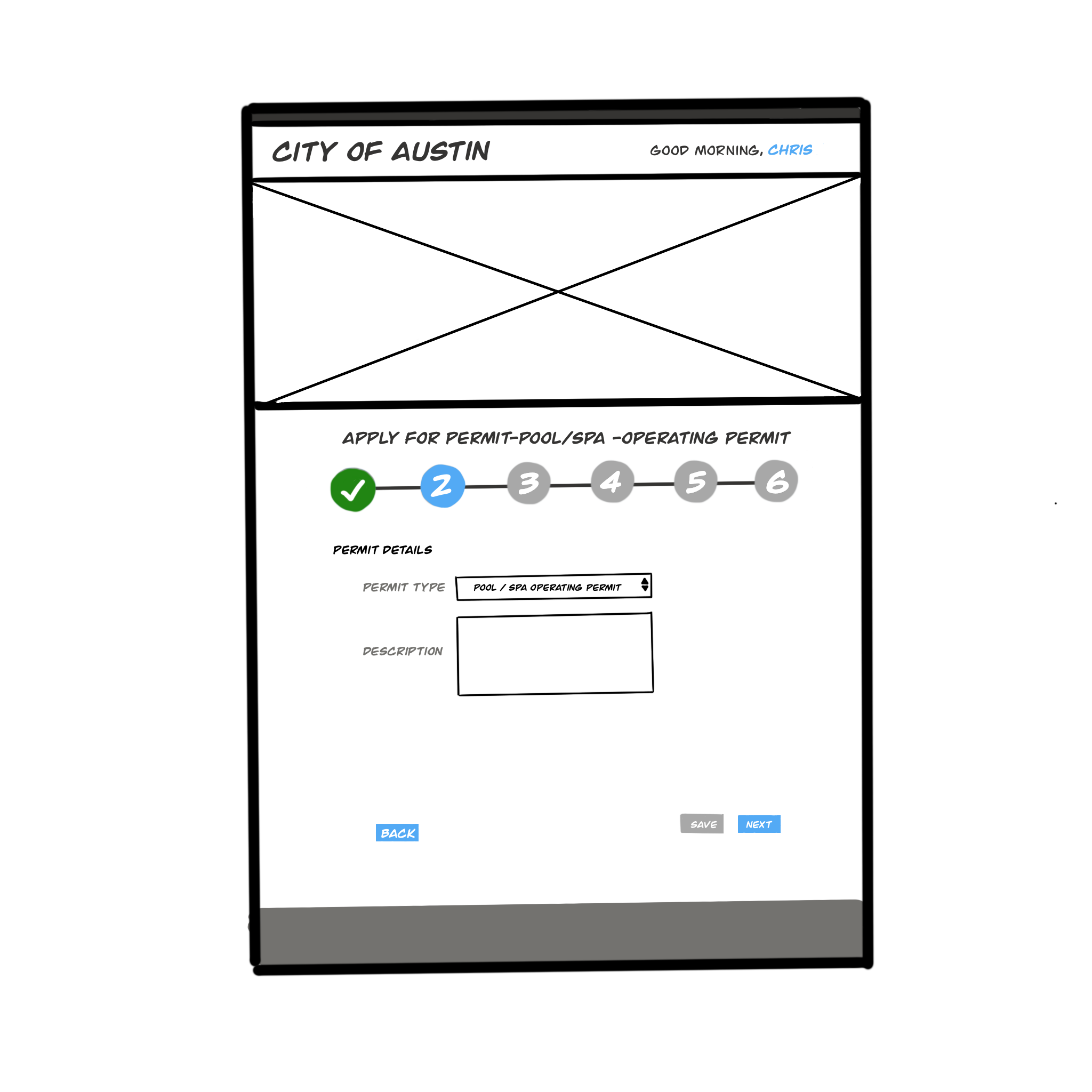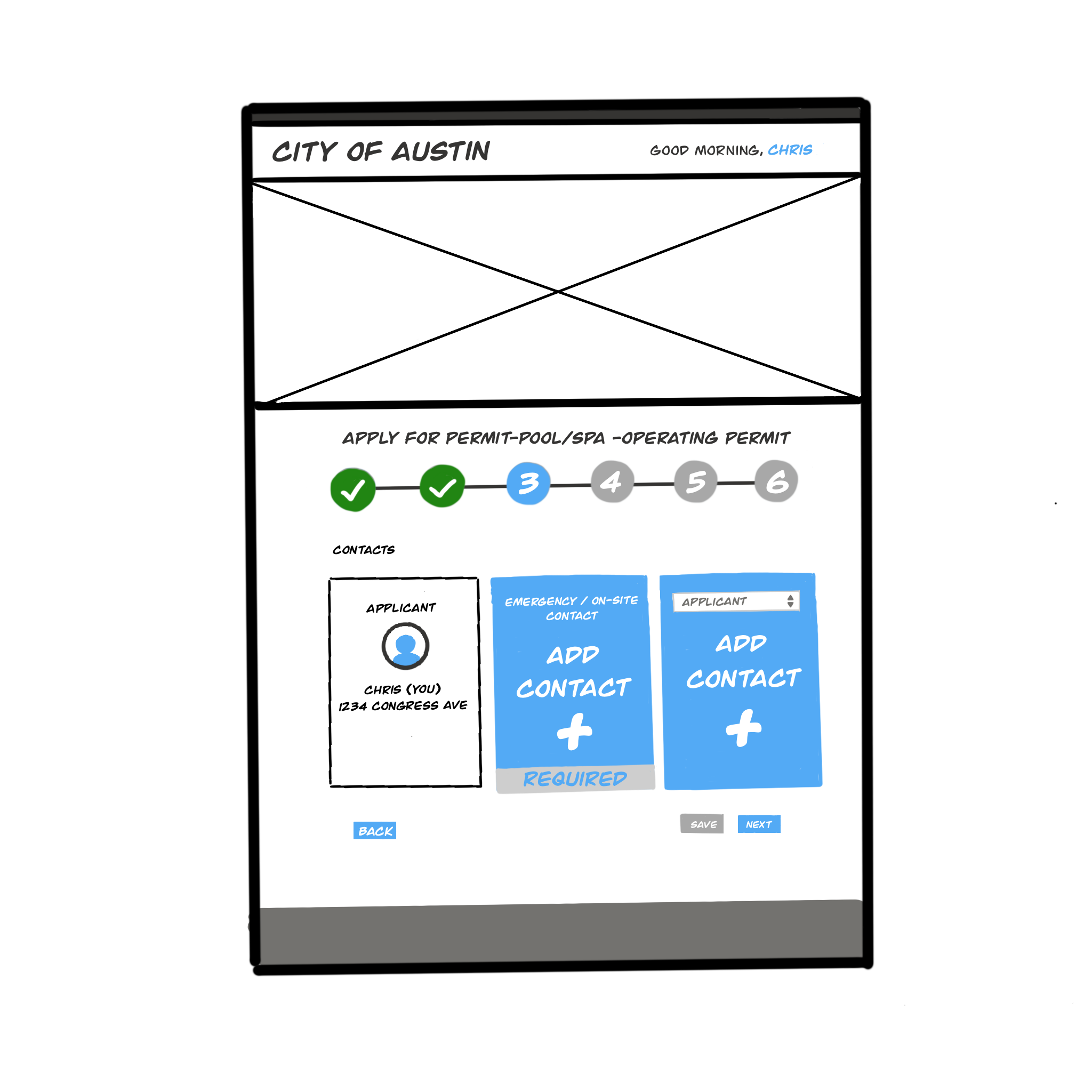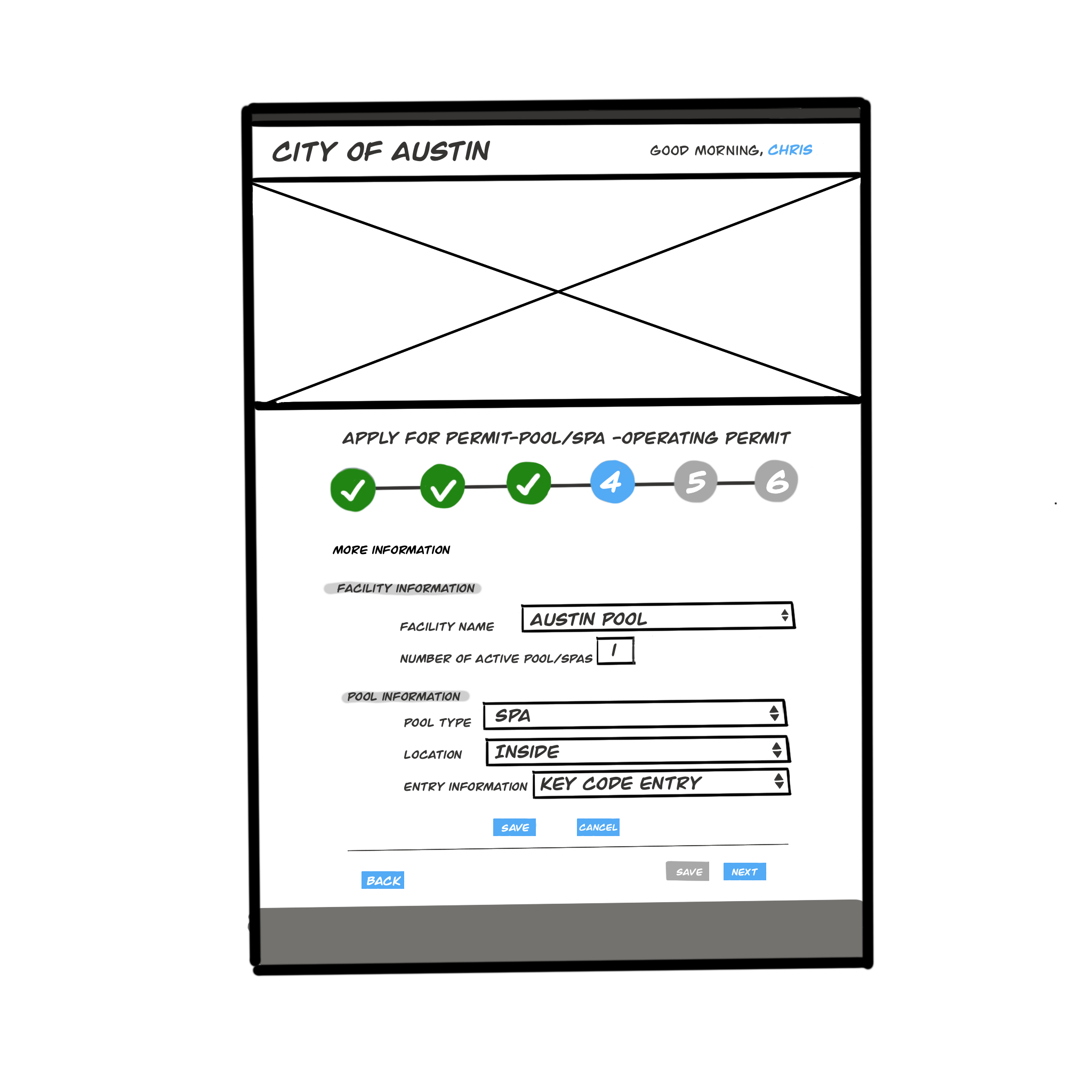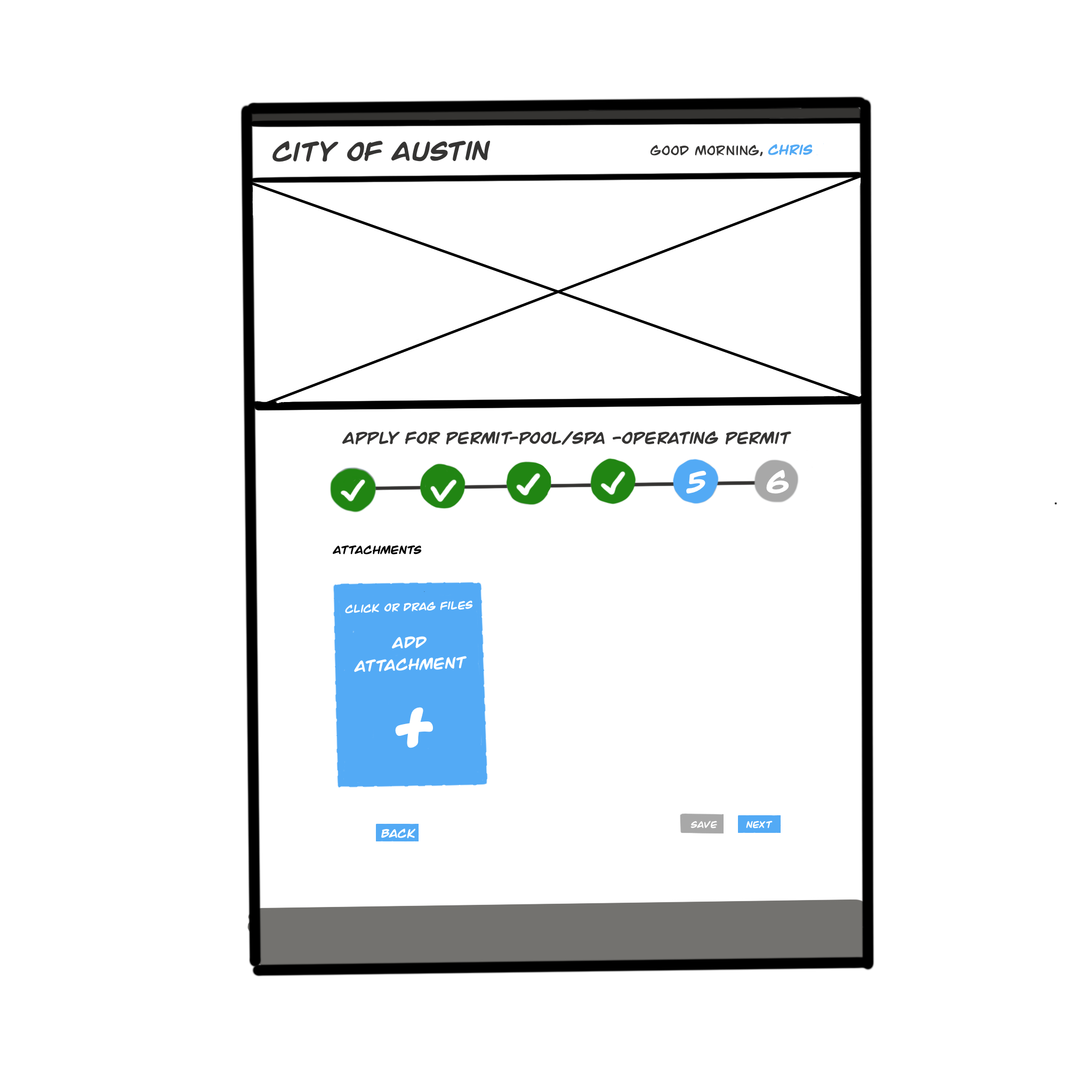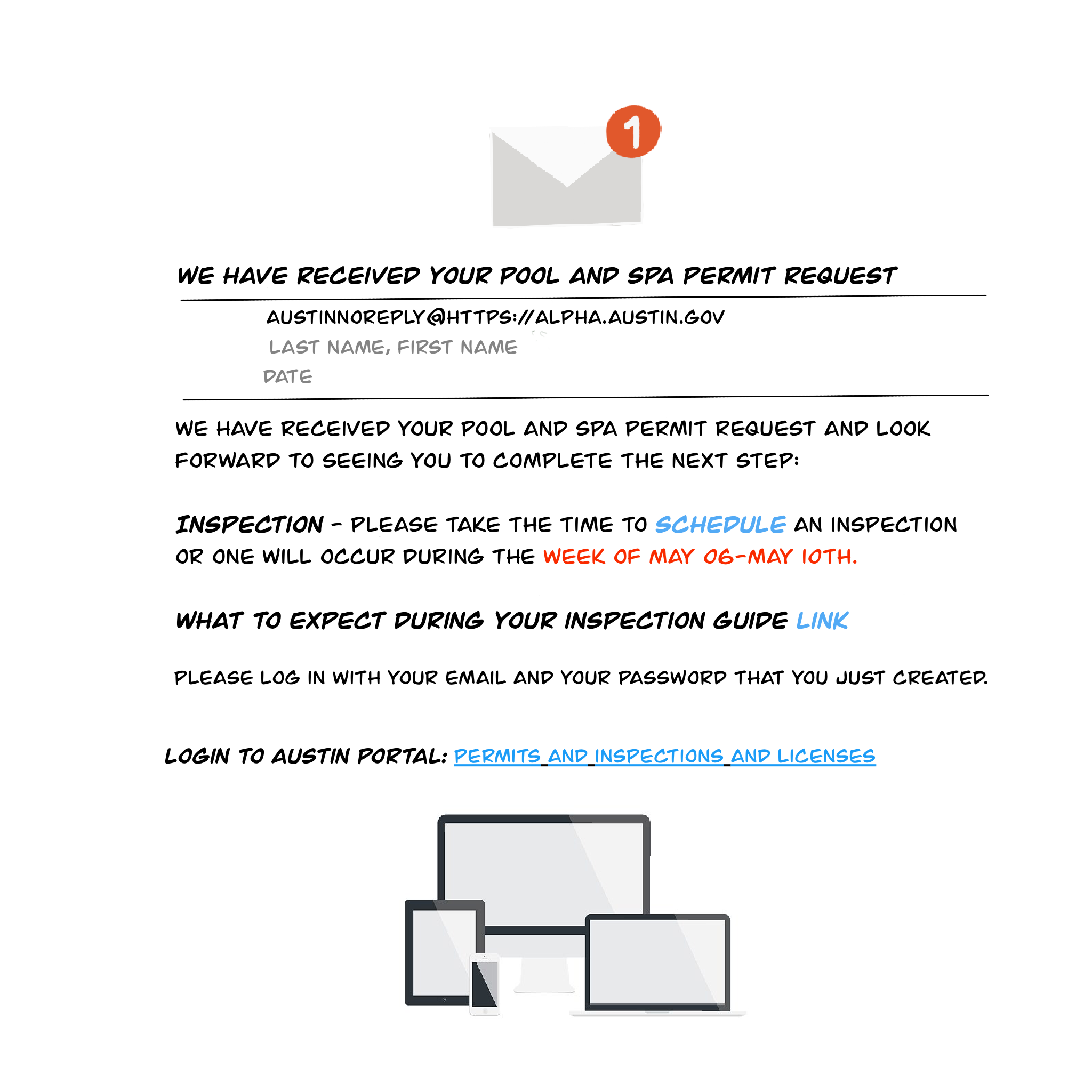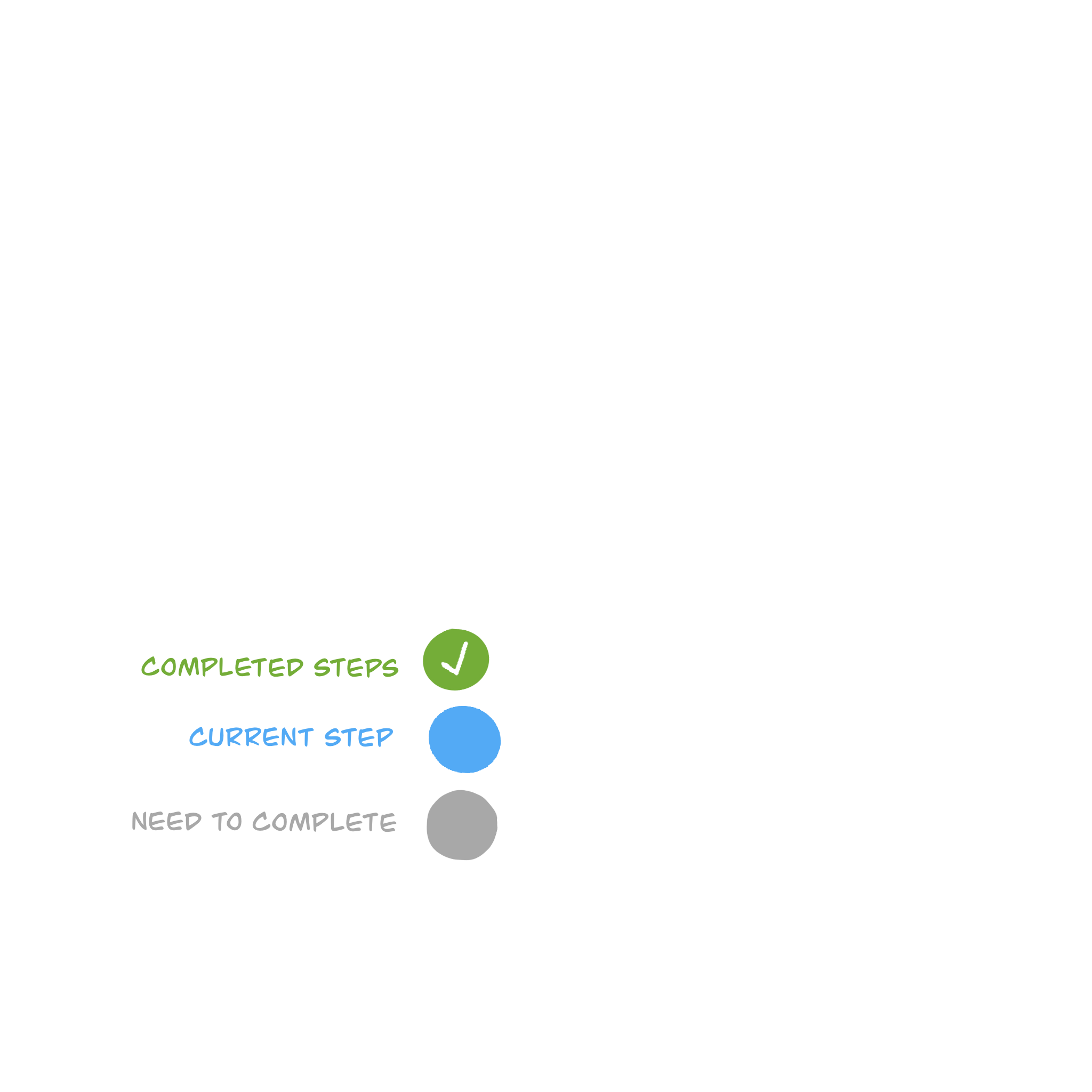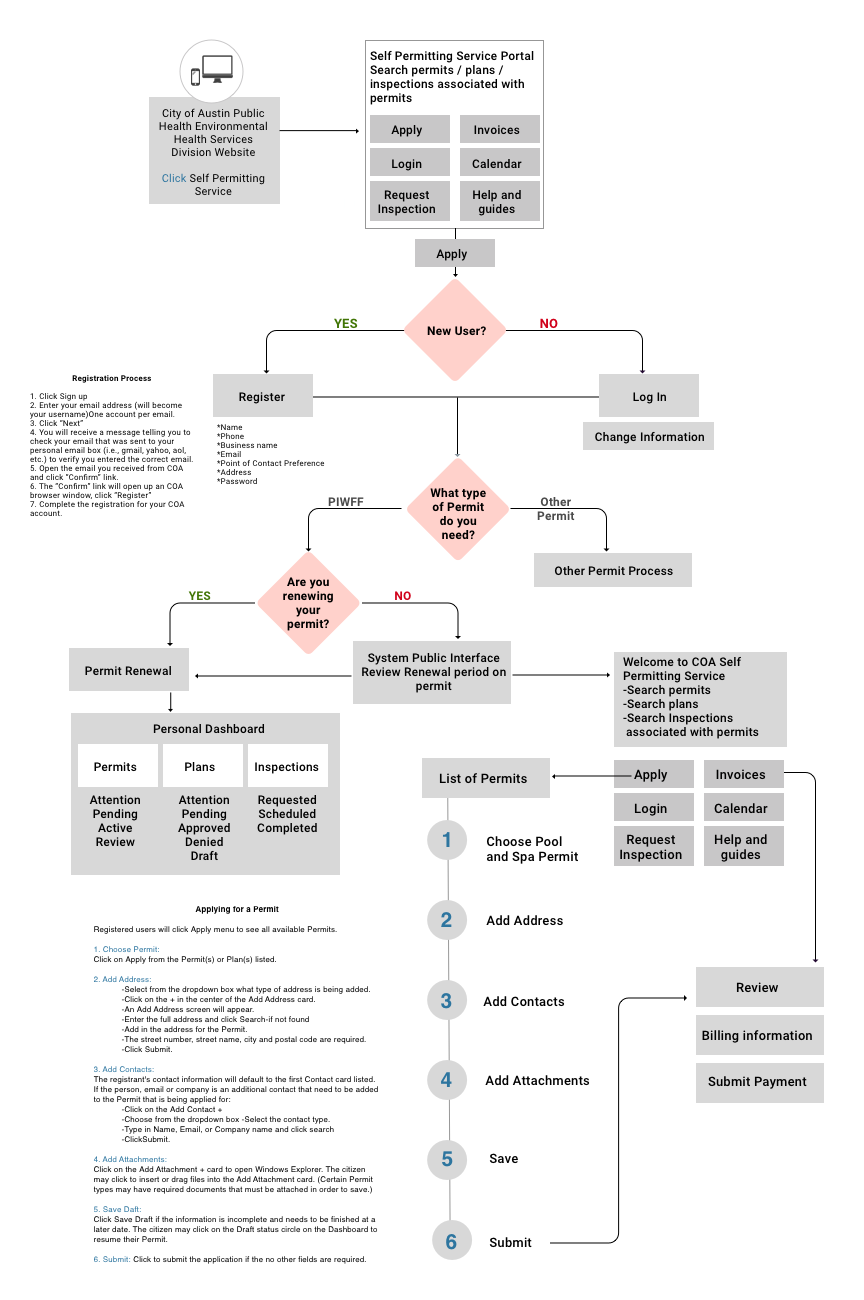Our office, in collaboration with Austin Public Health, worked to understand the current pain points and obstacles community service providers face in order to better support public and private pool permitting and inspections. This initiative is a partnership between neighborhoods, the community, government, higher education, public safety, researchers, and stakeholder groups. Together they are working to develop innovative solutions and complementary social services to the Austin area, rather than short-term fixes, because these solutions must be sustainable over time.
Partner(s): Service Design Lab / Austin Public Health / Environmental Health Services / 23 Rundberg Community Providers
Duration: 6 Weeks
My Role: (Research & Design & Facilitation) Stakeholder planning, Workshop Creation & Facilitation, Synthesis & Ideation of data
Design: Service Blueprint, Future State Journey Map, Prototype Wireframes, Workshop Templates
Tools: Sketch / Procreate / Google Docs-Sheets
Website: City Pool & Permit
Project Goals
To better understand, the current permitting process for the Environmental Health Service Division’s- Pool, Spas and Public Interactive Water Feature/Fountain (PIWFF), from beginning to end.
To Identify pain points in the public's user experience, while uncovering opportunities / tools to assist public health staff in creating a better inspection experience: Focus on Obtaining required point of contact and documentation, online permitting options, and current resources.
To Identify opportunities to cultivate and build better partnerships with the community, and other city departments, that have shared interest and resources in maintaining public health's mission.
Who & How
Pool regulations and codes are developed by government agencies to make sure that treated recreational water facilities (for example, pools, hot tubs, and water parks) provide a clean, healthy, and safe environment for the public. These regulations set minimum standards (such as the amount of chlorine that should be in the pool) to decrease the public’s risk of illness and injury. To ensure that these regulations are followed, state and local officials regularly inspect treated recreational pools.
Environmental Health Officers (EHO) through inspections of public aquatic facilities is an important tool in preventing recreational water–associated illness and injury.
EHO inspections of public aquatic facilities is an important tool in preventing recreational water–associated illness and injury. An inspection of a public aquatic facility is currently a multiple question paper assessment of whether its operation and maintenance meet the standards set in the jurisdiction’s public health code.
Environmental Health Services Division currently have 14 pool inspectors. All of the EHSD: EHOs that work on pools also work on something else. They are not strictly assigned to pools. These inspectors must visit more than 1600 public, apartment, and HOA pools throughout Travis county. According to inspection reports, each inspection can last anywhere from 10 minutes to over an hour. And in 2017 they had 2223 applications for new permitting.
Research & Discovery: Current Tool Inventory
We Conducted a Current Tool Inventory (software, communication, paper pencil) and conducted a comparative analysis into how other large cities currently deal with with Pool permitting and Inspections.
Research and Discovery: Interviews / Shadowing
Public User interviews are crucial technique of the discovery & research phase of the user-centered design process. They help us gain a deeper understanding into people’s behaviors and why they do what they do.
We consider the direct service city staff in departments that play a role in delivering this service to also be a user of the system, just like the public. We need to understand what is happening on the back end and understand if tools provided by the city work.
Throughout the interview we explored how users currently navigate through the system providing an idea of what they consider important, pain points, how they problem solve, and how they feel when interacting with the service.
Research and Discovery Workshop
We conducted a workshop focused on Goal Setting, Needs Identification and current system process mapping, and ended the day with light Ideation, & Storyboarding Solutions.
Identifying Patterns and Opportunities
After we had collected data about current process and experiences, we regroup to analyze it. In this case, we used tools to make sense of the data we collected. One example, is a user archetypes, or personas, which identify behavior patterns, goals, skills, attitudes, and background information, as well as the environment in which a persona operates.These insights and findings later framed our ideation around solutions to address these pain points, and opportunities.
Service Blueprint
Another is a journey map or service blueprint. These trace the experience of a users as they interact with a service or tool across time and touchpoints.
Insights & Recomendations
Build a better online application form and web experience
In an ideal world, users will fill the form with necessary information and finish their job successfully. In the real world, users often make mistakes. This is where form assistance and validation come into play. The goal of these actions is to explain how to fill out the form and to ensure that the user is provided necessary and properly formatted information needed to successfully complete an application.
I coined this COA-PUSH (Public User Service Hub) where you can apply for permits licenses and plans and search for inspection records and pay online. It Create sa Cohesive cycle of pattern finding, securing, educating, and publicizing new inspections data and policy updates so everyone is aware of the NEW.
By establishing an account and creating a login to the Public User Service Portal Customers have access to tools which allow them to:
Apply for permits, licenses, and submit plans- access records and service requests (inspections) of various types related to their project
Conduct financial transactions
Access from desktop computer or mobile device such as a tablet or smartphone.
